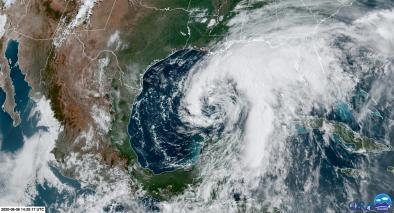Greater flood risks in response to slowdown of tropical cyclones over the coast of China
Study key findings:
- Observations and numerical simulations show a significant slowdown of tropical cyclones over the coast of China.
- Slower-moving tropical cyclones carry bigger flood risks.
- The study doesn't definitively link these slowdowns to climate change — it just confirms that they're happening, but many scientists suspect the patterns are linked to changes in atmospheric circulation, driven by climate change in the last few decades.
Study abstract:
The total amount of rainfall associated with tropical cyclones (TCs) over a given region is proportional to rainfall intensity and the inverse of TC translation speed. Although the contributions of increase in rainfall intensity to larger total rainfall amounts have been extensively examined, observational evidence on impacts of the recently reported but still debated long-term slowdown of TCs on local total rainfall amounts is limited. Here, we find that both observations and the multimodel ensemble of Global Climate Model simulations show a significant slowdown of TCs (11% in observations and 10% in simulations, respectively) from 1961 to 2017 over the coast of China. Our analyses of long-term observations find a significant increase in the 90th percentile of TC-induced local rainfall totals and significant inverse relationships between TC translation speeds and local rainfall totals over the study period. The study also shows that TCs with lower translation speed and higher rainfall totals occurred more frequently after 1990 in the Pearl River Delta in southern China. Our probability analysis indicates that slow-moving TCs are more likely to generate heavy rainfall of higher total amounts than fast-moving TCs. Our findings suggest that slowdown of TCs tends to elevate local rainfall totals and thus impose greater flood risks at the regional scale.
Related Content



